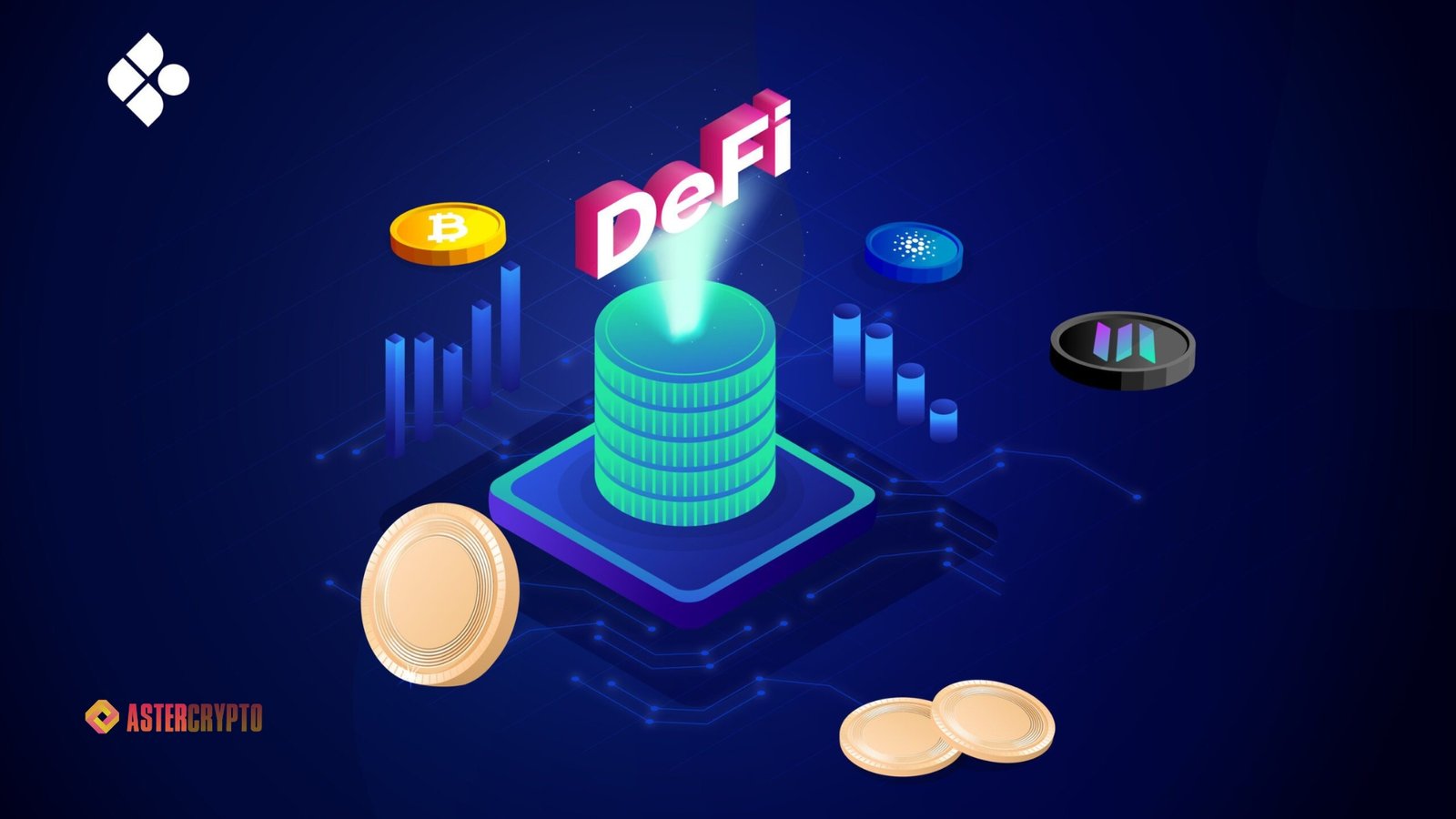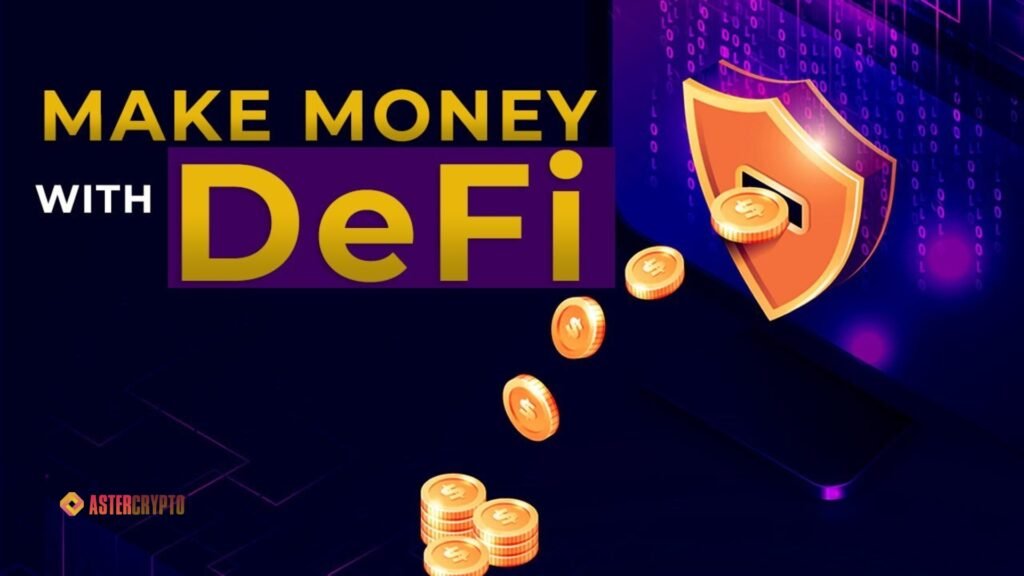The rapidly growing decentralized finance (DeFi) field is causing a seismic shift in the conventional banking industry by introducing new kinds of open, permissionless financial services. However, what is the specific way to get income via DeFi? Whether you’re new to crypto or have been immersed in the industry for a while, this guide will cover the basics and more to help you get the most out of DeFi.
When blockchain technology and cryptocurrencies are used to reimagine conventional financial services like lending, borrowing, trading, and investing, the term “DeFi” is used. A key component of DeFi, in contrast to more conventional forms of banking, is the use of smart contracts on blockchains such as Ethereum. Using smart contracts, users can bypass traditional intermediaries like banks and brokers by interacting directly with financial services.
When you use DeFi, your financial activities are more transparent, accessible, and under your control. Because of its decentralized design, anyone may join in, and most importantly, there are many opportunities to make money.
Popular Ways to Make Money with DeFi
Earnings opportunities abound in DeFi, from high-yield farming to staking. Now, we will examine the most popular approaches:

Yield Farming
One of the most well-known and promising methods to make money using DeFi is yield farming. It comprises lending money to lending protocols or decentralized exchanges (DEXs) for interest, rewards, or tokens. But, you are effectively lending a liquidity pool of your cryptocurrency assets in exchange for a cut of the fees the pool makes on transactions.
Profits can reach triple digits on yield farming platforms such as Uniswap, SushiSwap, and PancakeSwap. However, some hazards, like temporary loss and smart contract vulnerabilities, outweigh the benefits. Get a feel for the platform’s inner workings and the potential dangers before you dive in headfirst.
How to Get Started with Yield Farming
- Choose a DeFi platform (e.g., Uniswap, PancakeSwap).
- Provide liquidity by depositing crypto assets into a liquidity pool.
- Earn yield in interest or governance tokens (e.g., UNI, CAKE).
- Withdraw your funds and rewards when you’re ready to cash out.
Staking
Earning passive money in DeFi can also be done through staking. Staking your coin binds it to a mechanism that verifies transactions and helps keep the network secure. More cryptocurrency will be your reward for your efforts. Ethereum 2.0, Polkadot, and Cardano are examples of Proof of Stake (PoS) blockchains that commonly use staking.
Depending on the network and the cryptocurrency you stake, staking payouts might vary from 5% to 20% per year. Some platforms offer Even bigger returns, but the danger is typically higher.
How to Get Started with Staking
- Choose a PoS blockchain that supports staking.
- Purchase the native cryptocurrency (e.g., ETH, DOT, ADA).
- Use a DeFi wallet (e.g., MetaMask) to stake your tokens on a decentralized platform.
- Earn rewards over time, which can be reinvested to compound your returns.
Lending and Borrowing
You can lend your cryptocurrency holdings to borrowers via DeFi lending platforms such as Aave, Compound, and MakerDAO and receive interest. Lending rates in DeFi tend to be greater than those in conventional savings accounts, with yearly returns varying from 5% to 20%.
If you wish to keep some exposure to a certain cryptocurrency but don’t want to sell it just yet, you can borrow crypto assets by pledging them as security. Lenders gain from borrowers paying higher interest rates.
How to Lend or Borrow in DeFi
- Choose a lending platform (e.g., Aave, Compound).
- Deposit your crypto as collateral.
- Earn interest over time, which can be withdrawn or reinvested.
The potential of smart contract failures or market volatility affecting the value of your collateral is still present, even though lending is relatively low-risk compared to other DeFi activities.
Participating in DeFi Token Sales

Taking part in token sales, sometimes called initial DEX offers (IDOs), is another option to earn money in DeFi. Launchpads and decentralized exchanges facilitate the launch of native currencies by numerous DeFi projects. If the initiative is successful, early buyers of these tokens can occasionally reap substantial rewards.
Not every token sale turns a profit. Do your homework on the project’s team, roadmap, and market demand before putting your money into any token sale; some projects don’t meet expectations.
How to Participate in DeFi Token Sales
- Find a platform hosting an IDO (e.g., Polkastarter, Binance Launchpad).
- Register for the sale and pass any required KYC (know your customer) checks.
- Buy tokens using a supported cryptocurrency (e.g., ETH, BNB).
- Hold or trade the tokens for profit once they’re listed on an exchange.
Arbitrage Trading
Arbitrage trading is all about taking advantage of price differences between various DeFi systems. To illustrate the point, Uniswap and SushiSwap may display different cryptocurrency prices. An arbitrage trader can purchase the asset on the cheaper platform for a fast profit and then sell it on the more expensive one.
Profitable arbitrage trading necessitates constant vigilance and lightning-fast action to seize price discrepancies before the market rebalances itself. Technical knowledge is required to set up tools that automate this procedure, such as bots.
Steps for Arbitrage Trading
- Monitor prices across multiple decentralized exchanges.
- Use a DeFi wallet to buy assets on the cheaper platform.
- Sell the assets on the higher-priced platform to pocket the difference.
- Repeat the process whenever you spot a price discrepancy.
Investing in Governance Tokens
Users who participate in the platforms run by many DeFi protocols are given governance tokens. Not only may these tokens be sold on the open market, but they also grant holders voting rights on critical issues. Those who invested early in governance tokens like UNI (Uniswap) and AAVE (Aave) saw huge gains because of their strong appreciation since their debut.
DeFi platforms, participation in liquidity pools, and the purchase of governance tokens on exchanges such as Binance or Coinbase are all ways to gain them. If you own governance tokens, you can use them to vote on proposals or make money as their value increases.
Final Thoughts
There are many opportunities to generate passive income and increase your wealth on DeFi. You can earn using DeFi in various methods, including staking, yield farming, lending, and arbitrage trading. Nevertheless, to increase your odds of success, it is crucial to conduct thorough research, be aware of the potential hazards, and monitor market movements.
There are a lot of unknowns in the fast-growing DeFi industry, which could lead to smart contract vulnerabilities, unstable markets, and broken platforms, among other concerns. You should never put more money into an investment than you can afford to lose, and you should always begin with a small amount and spread it out.
Obtaining financial independence may be within your reach if you take the time to learn about and experiment with various DeFi tactics and platforms.
Also Read: Best DeFi Platforms: Leading Finance Ecosystems of 2024

